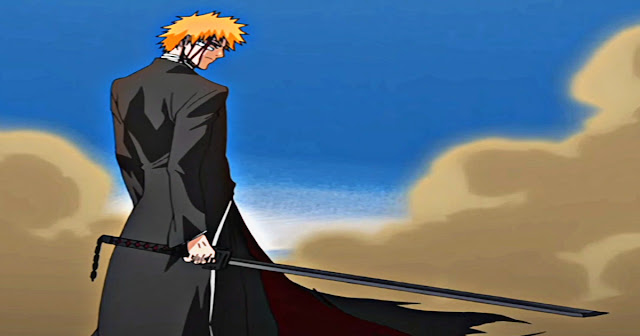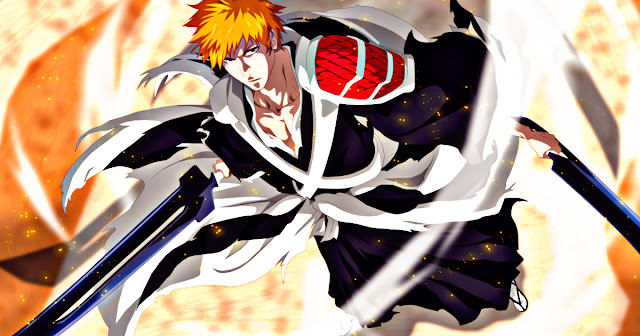Special
Ichigo Kurosaki is human and a lot of other things. Here’s an explanation of the Bleach protagonist’s all forms.
Ichigo Kurosaki is the main protagonist of the “Bleach” franchise (Anime, Manga and OVA etc). He is a teenager who possessed the ability to see ghosts/soul. He would eventually receive the powers of a Soul Reaper from Rukia Kuchiki and become a Substitute Soul Reaper who fights to protect his common peoples and his loved ones from the evil forces that threaten them. Over the course of his battles and training, he learned to unleash the greater extent of his powers from the hollow that resides within his soul, Zangetsu, allowing him to manifest his mask and Hollowfied form also he recently learn about Quincy powers dormant in his body by long time.
Human Form
Despite being the most basic form of Ichigo Kurosaki, he still possesses physical, mental, and paranormal powers beyond those of a normal human.
Ichigo not only has a sharp mind, but has trained in martial arts since childhood, making him an expert in hand-to-hand combat. He is also known for his exceptional strength, speed, endurance and agility.
Even before he acquired supernatural powers, he was endowed with spiritual consciousness, sensed the presence of otherworldly beings, saw them and communicated with them.
Soul Reaper/ Shinigami Form
Ichigo’s Shinigami form is the second character to appear in the anime. The Shinigami are the guardians of the soul, powerful “balancers”; invisible to those of the living world.
As a Shinigami, Ichigo’s powers become even more powerful: his spiritual awareness and sensory abilities reach a deeper level, and his physical strength and fighting skills are further enhanced.
It is currently believed that his powers were temporarily borrowed from Rukia’s sword, but later he is able to unleash his true potential from Shinigami.
Bankai Form
With Yoruichi’s help, Ichigo manifests his powerful Bankai form. Not only are his powers enhanced, but his clothing and sword also change: his shinigami robes are replaced with black and red shihakusho, and his huge shikai sword transforms into a solid black blade. Apparently, Ichigo’s Bankai form is an entirely different level of speed, strength, agility, and power.
Hollow Form
Ichigo has always had hollow powers dormant within his body. When it looked like he was about to lose the fight against Byakuya, his inner hollow emerged and took over Ichigo’s mind and body, replacing his face with a hollow mask and using his new enhanced powers to take advantage of Byakura and his full power rescue. Senbonzakura Kageyoshi.
Hollow Form Ichigo is a powerful hybrid of his Hollow and Shinigami forms, but can only access them for a limited time.
Final Getsuga Tensho Form
Getsuga Tensho is a powerful fighting technique that grants Ichigo the ability to fight with great power and allows him to deal massive damage.Ichigo can make apply to use the Getsuga Tensho when make a perfect fusion with Zangetsu, and this method can involve punching or slamming the ground to cause damage and mayhem.
This is another form that changes Ichigo’s appearance and powers. But this secret technique could have serious consequences, possibly destroying Ichigo’s spiritual power and ending his life as a shinigami.
Fullbring Form
Ichigo’s defeat by Aizen comes at a high price: he loses all his powers and abilities. He discovers he can gain a new power that only humans possess and begins training with Kugo Ginjoi. Ichigo’s new Fullbring power resembles his Hollow powers more than his Soul Reaper/ Shinigami powers.
Ichigo’s speed, agility, and strength are again increased, and he is clad in bone armor and wields a short, shiny sword.
Soul-Forged Shinigami
After losing his Shinigami powers, Ichigo reverted to his former life as a normal human, but that all changed when he was given another chance to become a Shinigami.
A special sword was forged for Ichigo this time, made from the reiatsu of all Soul Society members. When it was finally forged, Rukia stabbed Ichigo with her sword and Ichigo became a Shinigami again with mixed Shinigami, Hollow, and Fullbring powers.
Fully Awakened Shinigami Rebuild
Ichigo’s Bankai was destroyed during his battle against Haschwaith. He travels to the royal realm where Swordmaster Oetsu Nimaiya tells Ichigo how to communicate with Zangetsu.Ichigo is given two black Zangetsu, one long and hollow and the other short and solid. By accepting his various abilities and forms, Ichigo is able to perform Getsuga Juujishou, a deadly new power.
Ichigo Final Form
During the Blood War of Quincy, Ichigo battles Yhwach, Emperor Wandenreich and usurper of the Soul King’s power. Ichigo’s original Shikai reveals himself and impales Yhwach and destroys him with the Getsuga Tensho.
Special
[One Piece Spoiler]Predictions for the development and content of episode 1154 | Is “Loki’s Curse” revealed?[ONE PIECE]
![[One Piece Spoiler]Predictions for the development and content of episode 1154 | Is “Loki’s Curse” revealed?[ONE PIECE] [One Piece Spoiler]Predictions for the development and content of episode 1154 | Is “Loki’s Curse” revealed?[ONE PIECE]](https://eiga-manga.com/wp-content/uploads/2025/06/ONEPIECE1154話アイキャッチ仮.jpg)
We are predicting the content and development of episode 1154 of “ONE PIECE,” which will be published in Weekly Shonen Jump issue 33 (July 28th issue), which will be released on Monday, July 14th. Characters that appear and are thought to be active in the latest episode 1154 of One Piece, and more (…)
The post[One Piece Spoiler]Predictions for the development and content of episode 1154 | Is “Loki’s Curse” revealed?[ONE PIECE]first appeared on Manga Review Blog | Shindolog.
Special
[Latest One Piece Episode]Summary of spoilers and thoughts on episode 1153 | ONE PIECE depicts the process of Loki’s birth
![[Latest One Piece Episode]Summary of spoilers and thoughts on episode 1153 | ONE PIECE depicts the process of Loki’s birth [Latest One Piece Episode]Summary of spoilers and thoughts on episode 1153 | ONE PIECE depicts the process of Loki’s birth](https://eiga-manga.com/wp-content/uploads/2025/06/ONEPIECE1153話アイキャッチ.jpg)
This article contains spoilers for episode 1153 of “Loki’s Birth”, published in Weekly Shonen Jump 2025 issue 31 (July 14th issue) on Monday, June 30th. The latest episode revealed in Heildin’s mother, Ida and King Harald (…)
The post[Latest One Piece Episode]Summary of spoilers and thoughts on episode 1153 |[ONE PIECE]depicts the process of Loki’s birth first appeared on Manga analysis blog | Shindolog.
Special
[One Piece]Summary of spoilers and thoughts on episode 1152 | The truth behind King Harald’s death is revealed[ONE PIECE]
![[One Piece]Summary of spoilers and thoughts on episode 1152 | The truth behind King Harald’s death is revealed[ONE PIECE] [One Piece]Summary of spoilers and thoughts on episode 1152 | The truth behind King Harald’s death is revealed[ONE PIECE]](https://eiga-manga.com/wp-content/uploads/2025/06/ONEPIECE1152話アイキャッチ.jpg)
This article contains spoilers for episode 1152 of “ONE PIECE,” published in Weekly Shonen Jump 2025 issue 30 (July 7th issue) on Monday, June 23rd. Loki Gavan discovered in episode 1152 of the incident that he learned about 14 years ago (…)
The post[One Piece]Summary of spoilers and thoughts on episode 1152 | The truth behind King Harald’s death is revealed[ONE PIECE]first appeared on Manga Review Blog | Shindolog.









